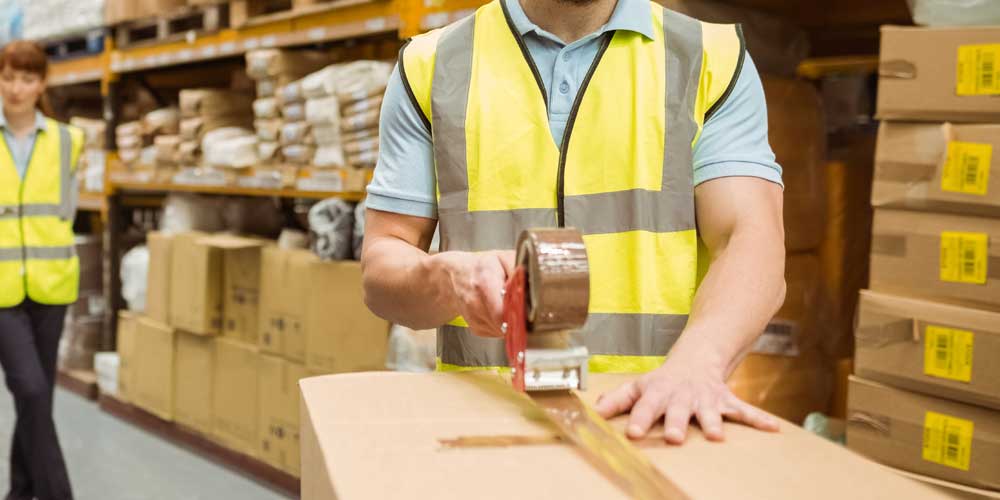Shipping packaged dangerous goods is not as simple as placing items in a box and sending them off. These materials require strict adherence to regulations to prevent environmental hazards, protect human health, and avoid legal repercussions. Yet, despite clear guidelines, many businesses make critical errors that can lead to delays, penalties, or even dangerous accidents.
From incorrect labeling to non-compliant packaging and improper storage, small mistakes can have big consequences. Understanding these common errors—and how to prevent them—can save businesses from costly disruptions and potential safety risks.
Incorrect Labeling and Documentation
One of the most common yet avoidable mistakes in shipping packaged dangerous goods is incorrect labeling and documentation. Regulatory agencies such as the International Air Transport Association (IATA), the Department of Transportation (DOT), and the United Nations (UN) Subcommittee of Experts on the Transport of Dangerous Goods require specific labeling, hazard markings, and documentation for all hazardous shipments.
Even a minor labeling error can result in shipments being rejected, delayed, or flagged for inspection. In worst-case scenarios, mislabeled hazardous materials could be mishandled, leading to serious accidents during transportation.
Common Labeling and Documentation Mistakes:
- Using incorrect hazard labels (e.g., marking a toxic substance as flammable).
- Missing key shipping documents, such as the Shipper’s Declaration for Dangerous Goods.
- Providing incomplete or inaccurate emergency contact details.
- Failing to use durable, legible labels that can withstand exposure to weather, handling, and transport conditions.
How to Avoid This:
- Double-check all labels against current regulatory requirements before shipping.
- Ensure hazard markings and handling labels are clearly visible and properly affixed.
- Verify documentation accuracy, especially when working with international shipments that may have additional requirements.
- Train employees on labeling protocols and maintain a checklist to minimize human error.
Mislabeling doesn’t just cause administrative headaches—it can jeopardize safety. Correcting these errors before shipping ensures compliance, prevents delays, and maintains the integrity of the supply chain.
Using Non-Compliant Packaging
Once a shipment is properly labeled, the next critical step is ensuring the right packaging is used. Dangerous goods cannot be packed in just any container; they must meet strict safety standards to prevent leaks, spills, and exposure.
Using non-compliant packaging is not only a violation of shipping regulations, but it also poses a major safety risk to transport workers, logistics personnel, and recipients.
Common Packaging Errors:
- Using non-UN-certified containers for materials that require specialized packaging.
- Failing to secure packages properly, leading to leaks, breakages, or contamination.
- Placing hazardous materials in incompatible containers, such as using metal packaging for corrosive chemicals.
- Neglecting inner packaging requirements, increasing the risk of damage during transit.
How to Avoid This:
- Always use UN-certified packaging designed for the specific hazardous material.
- Verify the compatibility of packaging materials with the substance being shipped.
- Secure all closures with tamper-proof seals to prevent leaks.
- Follow cushioning and spacing requirements to protect the integrity of the package.
Investing in compliant packaging from the start reduces liability, enhances safety, and prevents costly incidents that could lead to product loss, environmental damage, or regulatory penalties.
Failing to Classify Properly
Proper classification is one of the most critical steps when shipping packaged dangerous goods. Every hazardous material must be categorized based on its chemical properties, potential risks, and handling requirements.
Misclassifying a substance—whether intentionally or unintentionally—can lead to severe consequences, including improper storage, unsafe transportation, and regulatory violations.
Common Classification Mistakes:
- Misidentifying hazardous substances as non-hazardous, leading to incorrect handling.
- Assigning the wrong hazard class, which affects labeling, packaging, and transport methods.
- Overlooking secondary hazards, such as a liquid being both flammable and corrosive.
- Failing to determine the correct packing group, which impacts packaging and safety measures.
How to Avoid This:
- Refer to Material Safety Data Sheets (MSDS) to determine the exact classification.
- Use official classification systems, such as the UN’s Globally Harmonized System (GHS) and the Hazardous Materials Table (HMT).
- Train employees on classification guidelines to minimize errors.
- Cross-check classifications with regulatory agencies before shipment.
Proper classification ensures that packaged dangerous goods are handled, stored, and transported safely, preventing legal complications and accidents during transit.
Ignoring Storage Requirements
Even when packaging and labeling are correct, a shipment can still become a safety hazard if stored improperly before or during transport. Some hazardous materials require temperature control, while others must be isolated from incompatible substances to prevent dangerous reactions.
Common Storage Mistakes:
- Storing flammable substances near ignition sources, increasing the risk of fires.
- Placing incompatible materials together, such as oxidizers and combustible materials.
- Failing to secure packages properly, leading to leaks or accidental spills.
- Ignoring temperature and humidity requirements, which can alter the stability of certain chemicals.
How to Avoid This:
- Follow hazard segregation guidelines to store chemicals safely.
- Use climate-controlled storage areas for temperature-sensitive materials.
- Implement safety measures, such as secondary containment systems and spill control protocols.
- Regularly inspect storage conditions to identify and correct potential hazards.
Proper storage ensures that packaged dangerous goods remain stable and secure throughout the shipping process, reducing risks to workers and the environment.
Neglecting Regulatory Updates
Shipping regulations for packaged dangerous goods are constantly evolving, with agencies updating rules, restrictions, and classifications to address new risks. Companies that fail to stay informed risk non-compliance, leading to costly fines, shipment delays, and reputational damage.
Common Compliance Mistakes:
- Using outdated labels or packaging materials that no longer meet legal requirements.
- Overlooking new restrictions on specific hazardous materials.
- Failing to train employees on recent regulatory changes.
- Ignoring updated transportation rules, leading to shipment rejections or fines.
How to Avoid This:
- Subscribe to regulatory updates from agencies like IATA, DOT, and the IMO.
- Regularly review and update company policies to align with the latest regulations.
- Train employees frequently to keep them informed of changes.
- Consult compliance experts or legal advisors for major shipments.
Staying ahead of regulatory changes ensures that businesses remain compliant, efficient, and free from legal trouble, keeping shipments moving without costly setbacks.
Ensuring Safe and Compliant Shipping Practices
Shipping packaged dangerous goods demands precision, knowledge, and compliance at every stage. Mistakes in labeling, packaging, classification, storage, or regulatory compliance can lead to serious safety hazards, shipment delays, and financial penalties.
To avoid these pitfalls:
✅ Double-check labels and documentation to ensure accuracy.
✅ Use compliant packaging that meets UN certification standards.
✅ Classify hazardous materials correctly using official guidelines.
✅ Store goods properly to prevent chemical reactions or spills.
✅ Stay updated on shipping regulations to maintain compliance.
A proactive approach to handling dangerous goods will minimize risks, protect people and property, and ensure smooth transportation operations. When safety and compliance come first, businesses can avoid costly mistakes and maintain seamless logistics for hazardous shipments.




